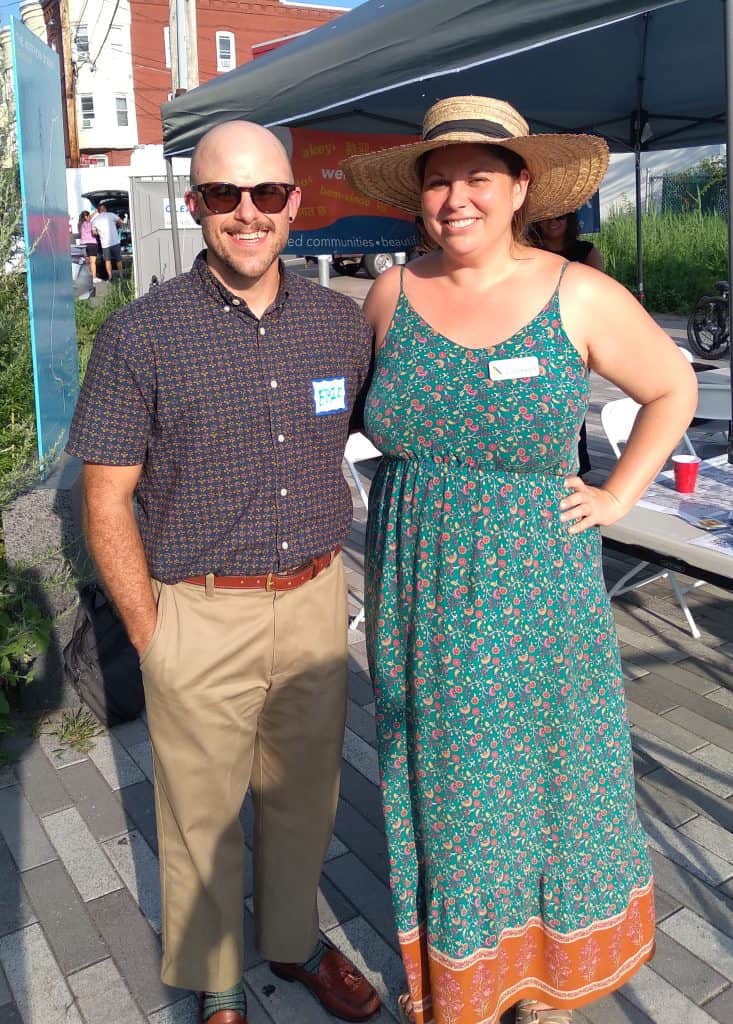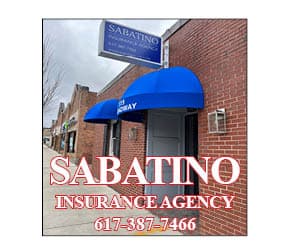By Neil Zolot
Everett is using $220,000 in state funds from the Shared Streets and Spaces Program for a Neighborhood Safety and Wayfinding Project, which City of Everett Transportation Planner Eric Molinari describes as “shared use community paths” to give people access to various places in the city without having to traverse busy streets. “We’re trying to connect people to important destinations without them having to be on main roads,” he said. “Everett is not always the safest place to walk or be on a bike. It’s more comfortable to be on back paths.”
One of the pathways is the Northern Strand Community Trail, part of a regional rail trail on abandoned railroad beds, roughly parallel to Main Street, used for walking and biking. In Everett it provides off-street connections between areas for about three miles from Malden to the Mystic River. Most of the project is on side streets, on which signage and walking lanes will be designated and traffic calming elements, like curb extensions and speed bumps, will be installed, although no final designation of which streets has been made.
“The project is pretty simple,” Molinari said. “We want to use roads people are already using, which are the low stress, less travelled roads. Walkers and bikers know the backroads. With branding, others will figure out how it works.”
Communities awarded grants have demonstrated their projects can be implemented by December 31, 2027. The state Dept. of Transportation (MassDOT) calls it a “quick-build grant program focused on projects that are easily implementable; align with the program goals of supporting public health, safe mobility, strengthened commerce and support safe travel to schools, including safe walking, bicycling, and pick-up/drop-off areas within two miles of schools or other facilities for children; projects that support safe routes for seniors, including safe walking and bicycling facilities within one mile of senior centers, housing for elders and travel corridors used by seniors; improve pedestrian and bicyclist access within one mile of transit facilities and projects that connect to or are located within one mile of transit-oriented development.” In general, successful projects have been those that can be implemented quickly, flexibly and at relatively low cost and that have demonstrated community support.
Everett’s status as an Environmental Justice Community — defined as a community typically composed of marginalized populations (low-income, minority or indigenous) that experiences a disproportionate burden of environmental hazards and health risks due to their location and proximity to pollution sources — helped secure the grant.
Neighborways is an informal term for streets used that way and, uncoincidentally, the name of consultant and planner Jessica Mortell’s firm, Neighborways Design. “It’s about safety,” she feels. “Some streets have 200 cars, others have 20. Which one would you rather walk on?” She also said that neighborways create “a nature-like experience or trail on the streets” with connecting areas and intersections adorned with murals and other features.
A PowerPoint presentation on the project outlined a vision of “connecting networks of nature corridors and neighborways and safer, more convenient and fun ways to walk, bike and take transit anywhere in Everett.”
Goals include “connecting people and Everett destinations, establishing an identifiable brand for Everett Neighborways and implementing placemaking and programming to increase walking, biking and wheeling to school.”
“It’s great,” Active Transportation Advisory Committee (ATAC) Chair Andrea Porras feels. “It’s low hanging fruit because it doesn’t involve construction, but there will be signage. Some of the area is already being used for non-automobile transportation to travel safely to main areas. Signage will help people already walking those streets.”
“I was happy to hear about this,” Active Transportation Advisory Committee (ATAC) Vice Chair and MassDOT Planner Derek Shooster added. “A lot of people in Everett don’t have a car or access to a car. The goal of the ATAC is to be a voice for them. The more that can be done to make people feel safer walking, the better.”
To help introduce the project, the first of a planned series of Neighborhood Socials was held on Tuesday, July 15 along the Northern Strand in the Village neighborhood where dead-end streets Wellington and West meet. “We want to engage people on this and want feedback,” Molinari explained.
The Wellington-West Plaza, as it is called, will be something of a model for connecting points along the neighborways network. It includes a map of the Northern Strand, stacked railroad ties for sitting, trash barrels, a blue bike sharing station and an informational panel on bees.
Quite a few bikers and walkers were using the Northern Strand, including Saul Saldarriaga and Fernando Vargas of Malden and John Snyder, who biked all the way from Salem along rails trails in that City, Saugus and Malden, interrupted by having to travel down Route 107 in Lynn.
Everett resident Maryellen Latas walked over. She called the establishment of Shared Streets “a welcome addition” and would like to see the bike path extended into Boston.
Councillor-at-Large Katy Rogers and Ward 4 Councillor Holly Garcia also attended the Neighborhood Social. “We want to make the City safer for people that bike and walk,” Garcia said.
“I’ve been advocating for pathways,” Rogers added. “How ever you can make connections will be for the good of our community.”





